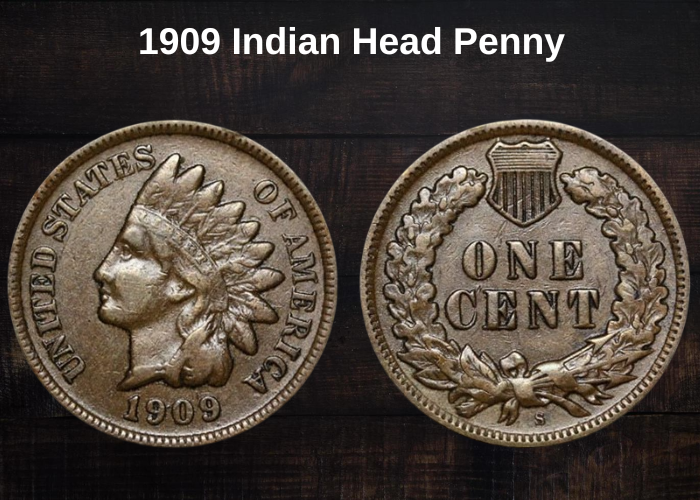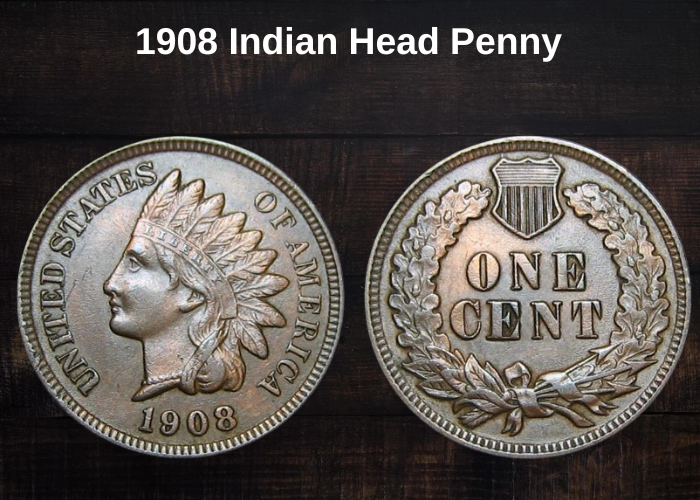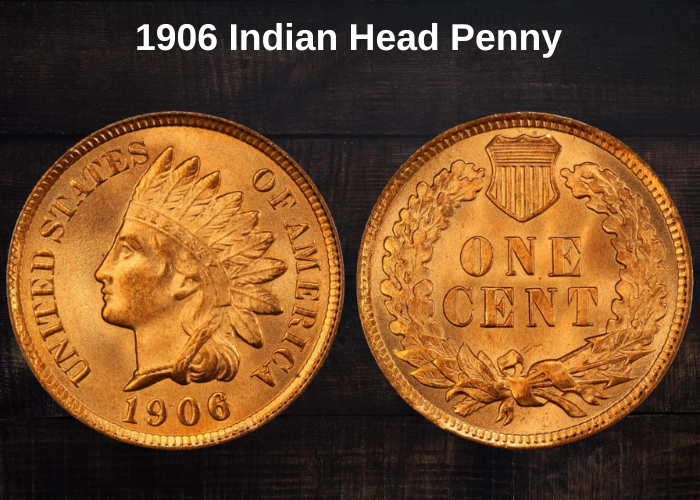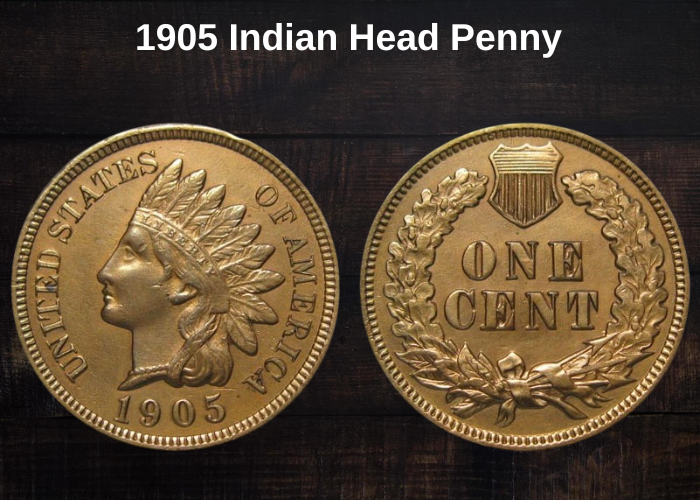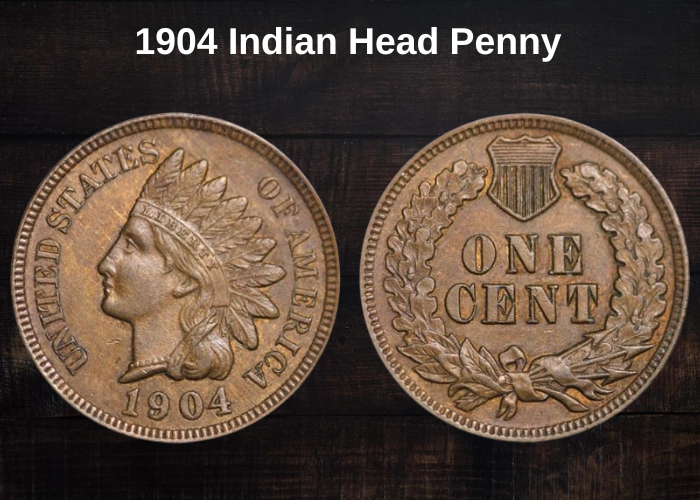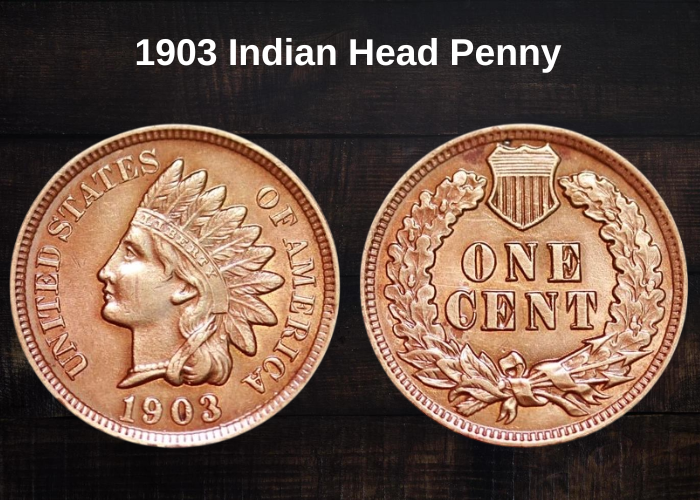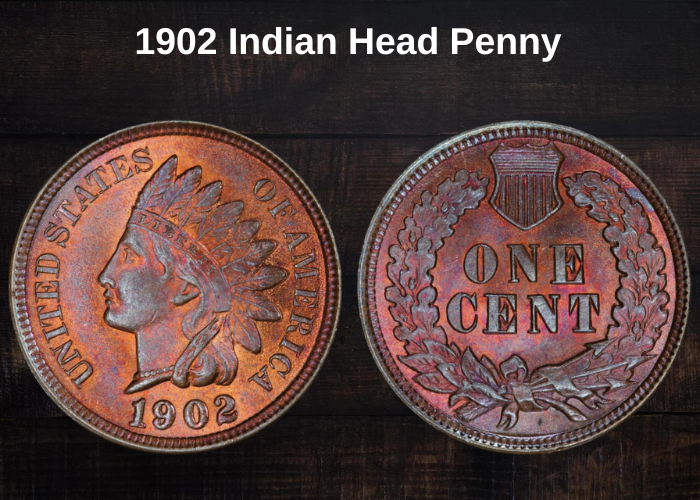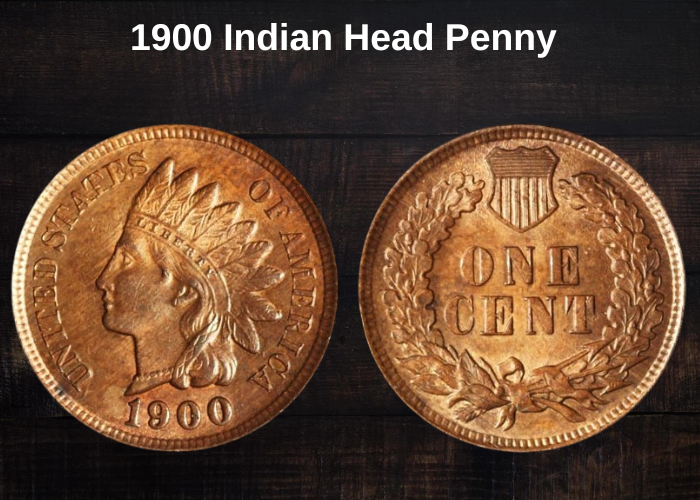The 1863 Indian Head penny holds significant value, as it is one of the most desirable coins from the Civil War period. Despite a relatively high survival rate, finding well-preserved examples remains a challenge.
These pennies were struck with a copper-nickel alloy, giving them a distinct weight compared to later issues minted after 1864. A popular legend suggests that soldiers wore these coins as lucky charms during the war, further enhancing their historical appeal.
1863 Indian Head Penny Value Guide
| Grade | Estimated Value |
|---|---|
| Good | $14 |
| Very Good | $22 |
| Fine | $29 |
| Very Fine | $41 |
| Extra Fine | $67 |
| About Uncirculated (AU) | $99 |
| Mint State 60 (MS 60) | $172 |
| Mint State 63 (MS 63) | $319 |
| Proof 63 (PR 63) | $1,202 |
These values reflect the growing demand for high-grade specimens, making this coin a prized addition to any collection.
History of the 1863 Indian Cent
The 1863 Indian Head penny marks an important moment in American numismatic history. It was the last year these cents were struck using the original copper-nickel alloy, before the transition to a bronze composition in 1864.
This coin was part of the larger Indian Head series, which replaced the Flying Eagle cents in 1859 and remained in circulation until 1909, when the Lincoln cent design took over. Interestingly, it was also the last US penny to feature an imaginary figure (Lady Liberty), before actual historical figures began appearing on US coinage.
Specifications of the 1863 Indian Head Penny
- Type: Indian Head Penny
- Year: 1863
- Minted at: Philadelphia
- Mintage: 49,840,000 (regular strike), approximately 460–1,000 (proof coins)
- Composition: 88% copper, 12% nickel
- Weight: 4.67 grams
- Diameter: 19.05 mm
- Edge: Plain
- Reverse Design: Oak wreath with shield (introduced in 1860)
1863 Indian Head Penny Value Chart
| Condition | Estimated Value |
|---|---|
| Good | $14 |
| Very Good | $22 |
| Fine | $29 |
| Very Fine | $41 |
| Extra Fine | $67 |
| About Uncirculated (AU) | $99 |
| Mint State 60 (MS 60) | $172 |
| Mint State 63 (MS 63) | $319 |
| Proof 63 (PR 63) | $1,202 |
The proof versions of this coin, with their sharp details and mirror-like surfaces, are highly scarce and can fetch premium prices.
Historical Significanc
- Civil War Connection: Many 1863 pennies circulated during the American Civil War, and some soldiers kept them as good luck charms.
- Transition Year: This was the last full year of the heavier copper-nickel cents, before the lighter bronze coins debuted in 1864.
- End of an Era: This was the final phase of the early Indian Head cent series, before a major change in metal composition.
The 1863 Indian Head penny remains a prized coin among collectors, both for its historical significance and its role as the last of the original copper-nickel Indian cents.
Features of the 1863 Indian Head Penny
James B. Longacre designed the Indian Head cent’s obverse, depicting a young woman wearing a Native American headdress, inspired by the statue of Crouching Venus. From 1859 to 1909, only the Philadelphia Mint struck both regular and proof versions of these coins. However, in the final two years of production, the San Francisco Mint also contributed to minting them.
The obverse of the 1863 Indian Head Penny
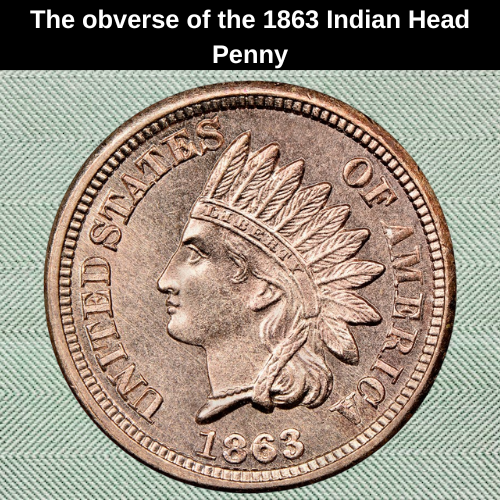
The 1863 Indian Head cent features Lady Liberty on the obverse, depicted with flowing hair, a pearl necklace, and a Native American headdress. The simple yet iconic design also includes the minting year (1863) and the nation of origin (United States).
There was speculation that Longacre based the Caucasian female figure on his own daughter, though this has never been confirmed. A particularly controversial aspect of the design is that the Indian headdress was traditionally worn by male warriors who had earned the honor through acts of bravery.
Additionally, the coin was introduced during a period when Native Americans were being forcibly displaced from their ancestral lands. As a result, many viewed its imagery as insensitive or even disrespectful, given the historical context and the hardships Native communities faced.
The reverse of the 1863 Indian Head Penny
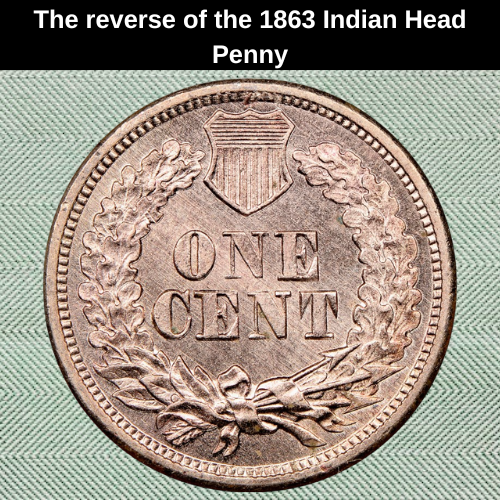
In 1860, James B. Longacre’s original laurel wreath reverse design was replaced with a new version that would remain in use throughout the series. The 1863 Indian Head cent features this updated reverse, which includes an oak wreath surrounding a heraldic shield at the top.
At the bottom, arrows wrapped together symbolize war efforts, while the oak wreath represents strength and authority. The denomination (ONE CENT) is prominently displayed in the center. Since all 1863 Indian Head pennies were struck at the Philadelphia Mint, no mint mark is present beneath the bow.
1863 Indian Head Penny Specifications
- Face Value: One cent ($0.01)
- Composition: 88% copper, 12% nickel
- Diameter: 19.05 mm (0.75 inches)
- Weight: 4.67 g (0.16473 ounces)
- Thickness: 1.55 mm (0.061 inches)
- Edge: Plain
- Shape: Round
Additional Features of the 1863 Indian Head Penny
The 1863 Indian Head cent stands out as a unique Civil War-era coin, primarily due to its copper-nickel alloy composition (88% copper, 12% nickel). This nickel content gave the coin a distinct pale appearance compared to later pennies, which contained a higher percentage of copper.
One of the notable characteristics of these coins is their weight. At 4.67 grams (0.16473 ounces), they are heavier than later Indian Head pennies, which weighed only 3.11 grams (0.1097 ounces) after the composition change in 1864.
Physical Characteristics:
- Material: 88% copper, 12% nickel
- Weight: 4.67 g (0.16473 ounces)
- Diameter: 19.05 mm (0.75 inches)
- Thickness: 1.55 mm (0.061 inches)
- Edge: Plain
- Shape: Round
These specifications, along with their historical significance, make the 1863 Indian Head penny a fascinating collectible for numismatists.
1863 Indian Head Penny Grading
Grading an 1863 Indian Head cent is a critical step in determining its true market value. Given the coin’s age and historical significance, grading requires careful inspection by experts to evaluate its condition, details, and potential errors.
Collectors and numismatists focus on key design elements, including:
- The headband and whether “LIBERTY” is fully visible.
- The sharpness of the feathers in Lady Liberty’s headdress.
- The wear on her cheek, neck, and hair.
- The clarity of the wreath and shield on the reverse.
Official Grading Scale:
| Grade Number | Grade Name | Description |
|---|---|---|
| 1 | Basal State-1 | Barely identifiable, extremely worn. |
| 2 | Fair | Major details barely visible. |
| 3 | Very Fair | Slightly better than fair, but still heavily worn. |
| 4-6 | Good | Outline of the design visible but lacks detail. |
| 7-10 | Very Good | Moderate wear, LIBERTY partially visible. |
| 12-15 | Fine | LIBERTY is mostly visible, moderate wear. |
| 20-30 | Very Fine | LIBERTY is sharp, slight wear on ribbon ends. |
| 40 | Extremely Fine | Clear details, minor wear. |
| 50 | About Uncirculated | Small traces of wear on high points. |
| 60 | Mint State (MS 60) | No signs of wear, but possible surface marks. |
| 65 | Mint State (MS 65) | Choice uncirculated, strong luster, few marks. |
| 70 | Mint State (MS 70) | Perfect coin with full mint luster, no flaws. |
Why Grading Matters?
Even minor differences in grade can cause huge price variations. For example:
- A Good (G-4) coin may be worth $14, while a Mint State (MS-63) piece could fetch $319.
- A Proof (PR-63) version of the 1863 Indian Head penny is valued at over $1,200.
Collectors should consult professional grading services (PCGS, NGC, ANACS) for an accurate assessment of their coin’s condition.
1863 Indian Head Penny Value Guides
The 1863 Indian Head penny was exclusively minted at a single location. However, it’s difficult to determine the exact number produced due to varying reports on the proof coins. Estimates suggest the total mintage was somewhere between 49,840,460 and 49,841,000 coins.
While the majority of these coins were standard issues intended for circulation, only a small number of proof coins were minted for collectors. These coins, with their elegant design and heavier weight compared to other pennies from the series, are highly valued by serious collectors.
1863 No Mint Mark Indian Head Penny Value
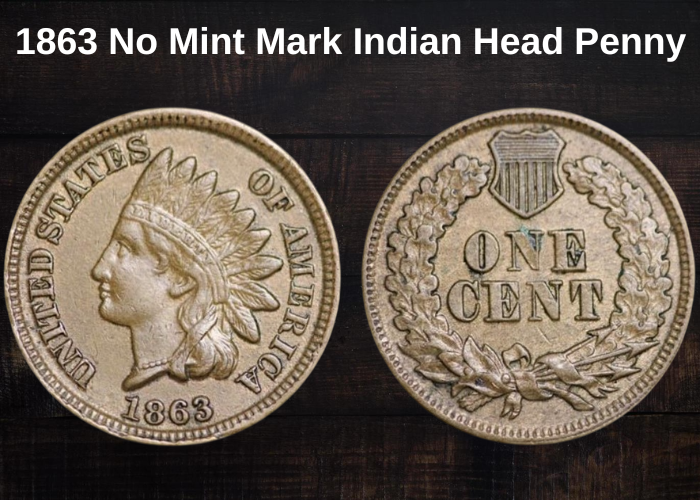
In 1863, the Philadelphia mint produced the highest number of regular Indian Head pennies in the series, with a total of 49,840,000 coins released into circulation. Many of these coins have survived over the years, and their value depends largely on their condition.
- Coins in GOOD condition start at around $8.50, with those in better condition ranging from $12 to $60.
- Coins in About Uncirculated condition can fetch prices between $90 and $143.50 each.
For coins in Mint State, the value increases significantly based on the grade:
- MS 60: $165
- MS 61: $185
- MS 62: $275
- MS 63: $385
- MS 64: $550
- MS 65: $1,000
Coins in particularly well-preserved condition can command even higher prices. For example, a coin graded MS 66 could be worth around $3,600, and a coin graded MS 67 can reach an estimated $26,000.
1863 Indian Head Penny Value (proof)

The Philadelphia mint produced an estimated 460 to 1,000 proof 1863 Indian Head cents, and these coins have become quite scarce over time. The lowest collectible examples in PR 60 grade are valued at around $425, with prices increasing for better-grade specimens.
Here’s a breakdown of the value range for 1863 proof Indian Head pennies based on their PR grading:
- PR 61: $675
- PR 62: $700
- PR 63: $1,350
- PR 64: $1,800
- PR 65: $2,350
- PR 66: $5,250
The rarest and most highly valued examples are those graded PR 67, which can fetch around $16,000. In fact, one such coin was sold in 2001 for $12,075.
Additionally, 1863 PR 65 Indian cents with Deep Cameo (DCAM) quality have set auction records. In 2019, one such coin sold for $16,800. Another PR 67 piece with cameo contrast was sold at Heritage Auctions in 2020 for an impressive $28,800.
Rare 1863 Indian Head Penny Errors List
The 1863 Indian Head cent series is well known for featuring several highly collectible minting errors. While some of these pieces can be acquired for a few hundred dollars, others have achieved record-breaking prices at auctions. Let’s take a look at some of the most notable ones.
Die cap error

In rare instances, a previously struck penny can become lodged in the die, leaving a faint impression on subsequent coins in the production line. This repeated striking alters its shape over time, eventually making the stuck piece resemble a bottle cap.
Because these errors are both uncommon and visually striking, collectors are willing to pay a premium for them.
For example, an 1863 ‘Deep Obverse Die Cap’ penny graded MS 65 was auctioned at Stack’s Bowers on August 11, 2020, where a collector purchased it for $18,000.
Broad strike
Occasionally, the die struck the 1863 Indian Head cent when the collar was either missing or damaged. As a result, these coins became thinner than the standard 1.55 mm (0.061 inches) and had a wider diameter than the usual 19.05 mm (0.75 inches).
The value of these error coins varies depending on their appearance and condition, making them unique collectibles in the numismatic world.
Off-center error

The 1863 Indian Head cents with this off-center striking error typically show a misalignment of 10% to 15%. Due to their rarity and visual appeal, these error coins are valued at approximately $300 to $350.
Struck-Through Error
This rare minting error occurs when a foreign object gets trapped between the die and blank planchet during the striking process. The value of these error coins depends on how much of the surface is affected and the overall appearance of the imperfection. Collectors often find these pieces intriguing due to their unique and unpredictable designs.
Cud Error
Some 1863 Indian Head cents exhibit a cud error, which appears as a raised blob along the coin’s edge. This happens when a small piece of the die breaks off during minting, causing metal to flow into the gap and form a lump. These error coins are relatively common and typically sell for around $50.
Doubled die reverse
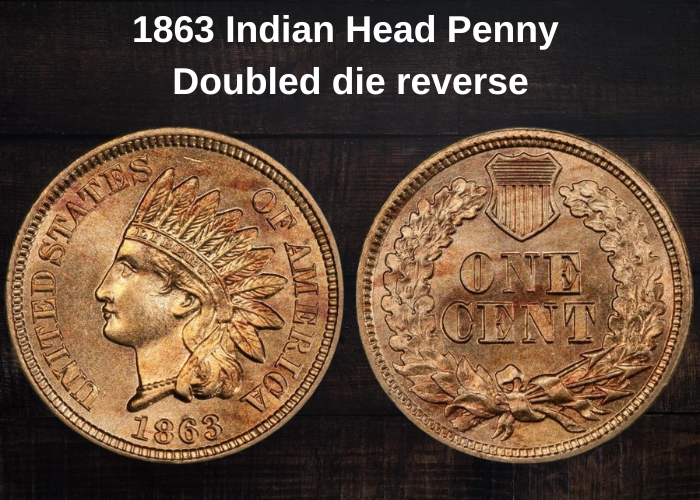
This type of error is usually minor in the 1863 Indian Head cent series. However, some collectors still seek out these coins, especially when the doubling is noticeable. In 2023, one MS 62-graded specimen with visible doubling on the surface sold for $1,560.
Misplaced Date (MPD) Error
Occasionally, mint workers failed to properly re-punch a misaligned date on the 1863 Indian Head cent, resulting in a visible mistake. Coins with this uncorrected error can be highly valuable. In 2016, an AU 55-graded MPD error penny sold for $259.
Re-Punched Date (RPD) Error
During the 19th century, mint workers hand-punched the date onto coins, leading to occasional misalignment and re-punching. Some 1863 Indian Head cents display this feature. In 2022, a re-punched date (RPD) error coin with an MS 61 grade was sold for $168.
Where to Sell Your 1863 Indian Head Penny?
If you’re considering selling your 1863 Indian Head penny, there are various online platforms where you can easily list and sell your coins. Below is a guide to some of the best options, along with their advantages and disadvantages, to help you choose the right one for your sale.
1. eBay
Overview: eBay is a well-known online marketplace where you can auction or sell coins at a fixed price to a global audience.
Advantages:
- Access to a worldwide buyer base.
- Flexible selling options, including auctions and fixed prices.
- Buyer and seller protection through eBay’s platform.
Disadvantages:
- High seller fees (typically around 10% or more).
- You might deal with returns or disputes.
- Requires familiarity with the platform’s auction system and terms.
2. Heritage Auctions
Overview: Heritage Auctions is one of the leading auction houses specializing in rare and collectible coins. It’s a great platform for selling high-value coins like the 1863 Indian Head penny.
Advantages:
- Trusted and reputable auction house with a strong numismatic following.
- Can fetch higher prices for rare, high-quality coins.
- Expert grading and marketing can increase the coin’s value.
Disadvantages:
- Heritage Auctions takes a commission (typically around 10% or more).
- You may need to wait for the right auction event.
- Fees are higher than other selling methods.
3. Coin Marketplace Websites (like CoinWeek or CNG)
Overview: These specialized online marketplaces are focused on numismatic sales. You can list your 1863 Indian Head penny for sale directly on their platforms.
Advantages:
- Focused audience of collectors and investors.
- Expert-level marketing of your coin.
- Some websites offer valuation services.
Disadvantages:
- May have listing fees or commissions.
- You might have to pay for expert grading before listing.
- Not as widely known as eBay, so fewer buyers may see your coin.
4. Facebook Marketplace or Groups
Overview: Facebook allows you to join numismatic groups or sell directly to local buyers through the Marketplace feature.
Advantages:
- No seller fees.
- Direct communication with potential buyers.
- Easy listing process.
Disadvantages:
- Limited audience compared to global platforms.
- Risks of scams or fraud with no buyer protection.
- Need to manage payment and shipping yourself.
5. Local Coin Shops
Overview: Many coin shops buy and sell coins, especially rare ones like the 1863 Indian Head penny. You can either visit in person or contact them online.
Advantages:
- Immediate payment.
- No online fees or commissions.
- Often, you can negotiate directly with the dealer.
Disadvantages:
- Dealers may offer less than market value to ensure a profit.
- Limited to local or regional buyers.
- May not provide the highest possible price.
FAQ about the 1863 Indian Head Penny
1. What makes the 1863 Indian Head Penny rare?
The 1863 Indian Head pennies are not particularly rare in terms of mintage, but their historical significance and survival rate make them unique. The coins were minted during the Civil War era, and over 160 years later, the best-preserved specimens are challenging to find. These coins have survived many years of wear and are rare in excellent condition.
2. Which 1863 Indian Head Penny is worth a lot of money?
Some of the highest-selling 1863 Indian Head pennies include:
- A 1863 PR 67 Indian CAM cent sold for $28,800 at Heritage Auctions (Nov 22, 2020).
- A 1863 MS 67 Indian cent sold for $24,000 at Heritage Auctions (Apr 25, 2021).
- A 1863 PR 65 Indian DCAM cent sold for $16,800 at Stack’s Bowers (Aug 20, 2019).
- A 1863 PR 67 Indian cent sold for $12,075 at Heritage Auctions (Jan 4, 2001).
- A 1863 MS 62 Indian cent with DDR error sold for $1,560 at Stack’s Bowers (Mar 29, 2023).
- A 1863 AU 55 Indian cent with MPD error sold for $259 at Heritage Auctions (Jun 7, 2016).
- A 1863 MS 61 Indian cent with RPD error sold for $168 at Stack’s Bowers (Feb 3, 2022).
3. How much is the Indian Head Penny worth?
The value of the 1863 Indian Head penny depends on its condition:
- Circulated coins: $8.50 to $143.50 depending on the grade.
- Mint state coins: $135 to $935.
- Well-preserved specimens (MS 66): $1,860 to $2,400.
- Rare MS 67-rated specimens: $15,000 to $18,750.
4. What is the priciest Indian Head Penny?
The most expensive Indian Head penny is the 1864 “L on the ribbon” error coin:
- The 1864 PR 65 error coin was sold at $161,000 at Heritage Auctions in 2011.
The next three most expensive Indian Head pennies are:
- 1877 MS 66 Indian Head cent sold for $149,500 on Aug 9, 2007.
- 1902 MS 68 red Indian Head cent sold for $144,000 on Jun 17, 2022.
- 1872 MS 66 Indian Head cent sold for $126,500 on Aug 9, 2007.

